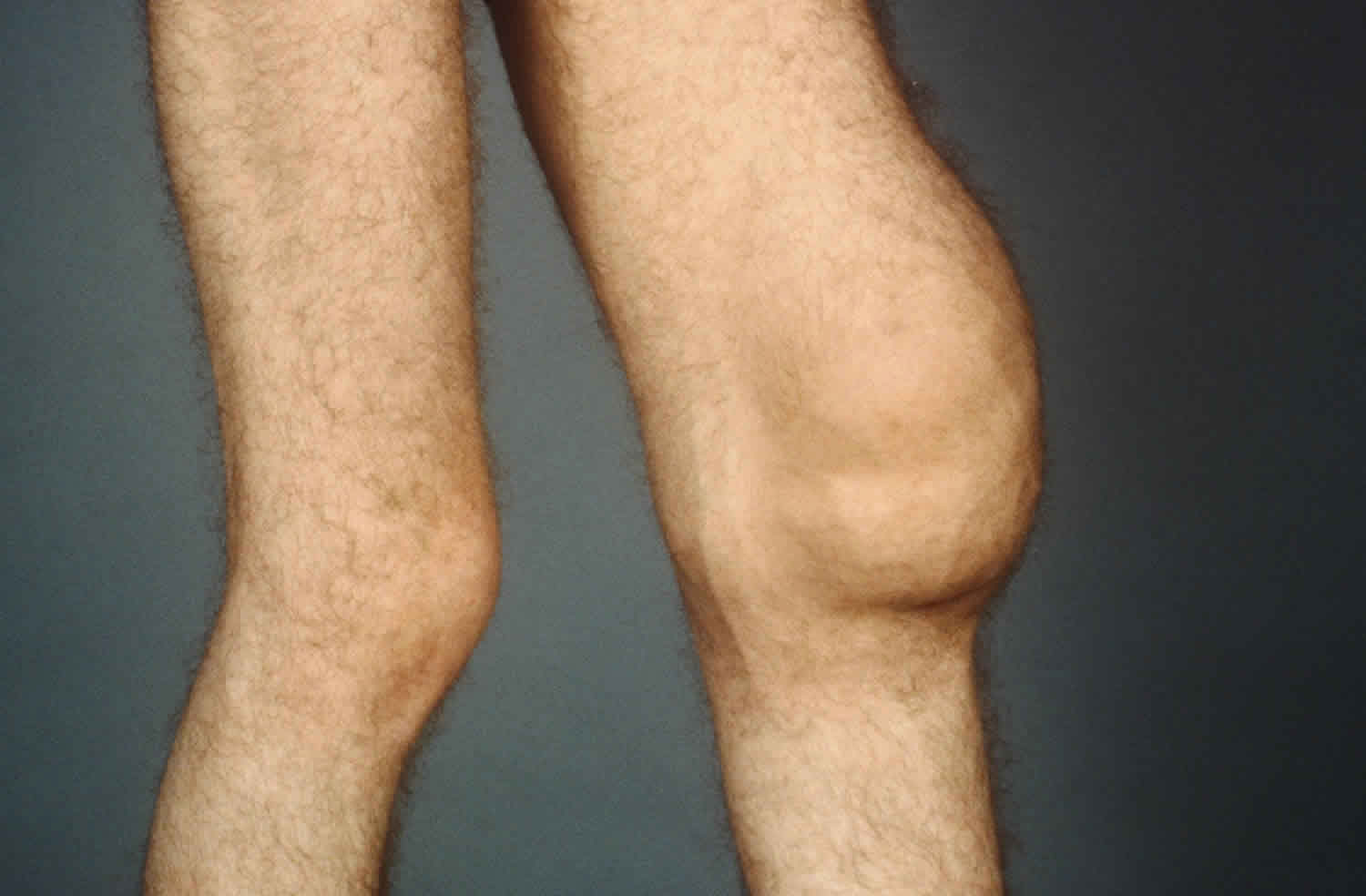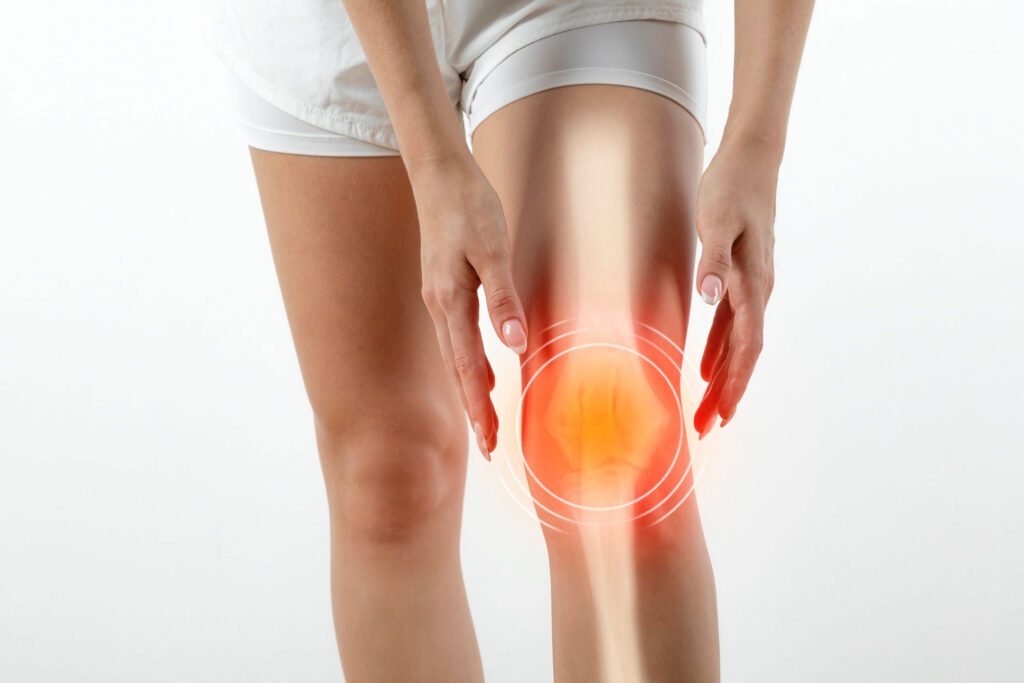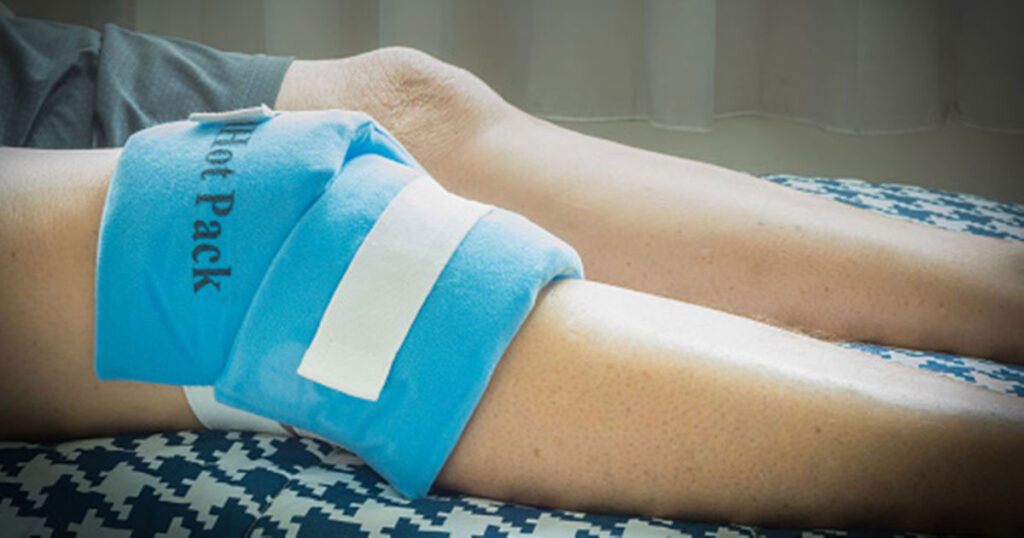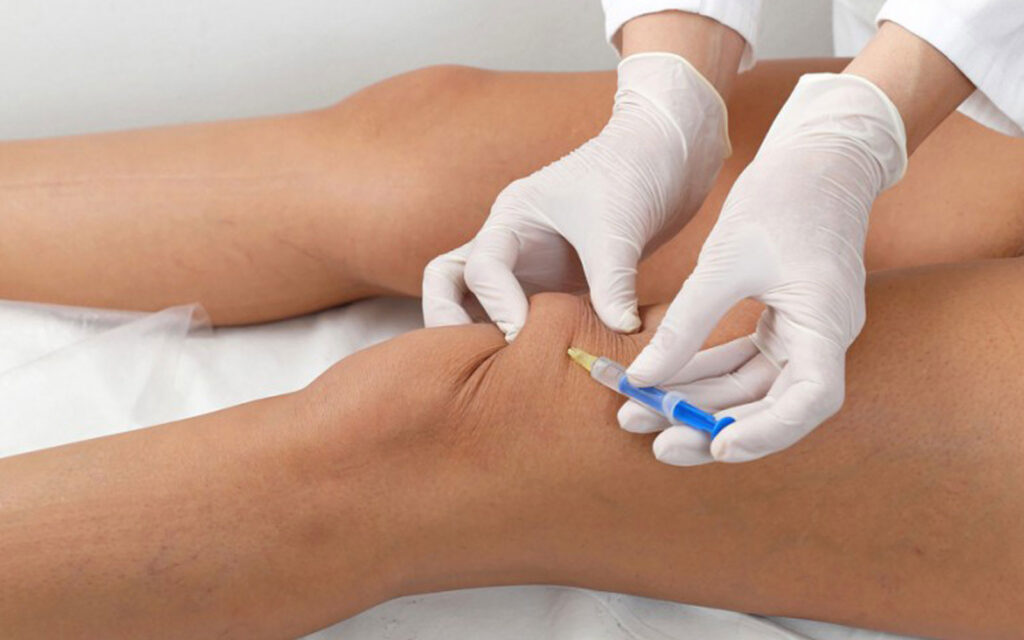WATER ON THE KNEE: JOINT EFFUSION
Our body has a joint lubrication system that cuts down on friction and helps to promote smooth joint rotation. Sometimes, too much fluid gets accumulated around the joint causing joint effusion, also known as swollen knee or water on the knee. This condition can result from an injury, infection, or medical condition.
About 27% of people in the United States might experience fluid on the knee at some time in life. Together with swelling, the excess fluid in the joints can also result in pain and stiffness. The effusion tends to affect the larger joints including the knee, shoulder, elbow, or ankle. It is different from edema, which is a different type of swelling caused by inflammation, allergy, heart failure, and other conditions.

WHAT CAUSES WATER ON THE KNEE?
The knee joint is among the largest joints in our body. The knee joint is a hinge joint, which consists of three bones—the thighbone (femur), shinbone (tibia), and kneecap (patella). The knee joint also consists of several ligaments, tendons, cartilage structures, and bursae or fluid-filled sacs. The fluid in the joint or synovial fluid covers the joint structures to cushion them as well as reduce friction between them.
Sometimes, the fluid on the knee or synovial fluid can occur in large quantities, or the blood and/or lymph fluid leaks into the joint causing the swelling. The excess fluid may accumulate in the synovial cavity, which is the closed space enveloping the joint that holds synovial fluid. Sometimes blood and fluid can accumulate within the surrounding soft tissues, especially in case of trauma or severe inflammation. Doctors would refer to this condition as knee joint effusion.
The accumulation of additional fluid can be caused due to various medical conditions, such as:
- Traumatic injury that may lead to a fracture or ligament damage
- Rheumatoid arthritis
- Osteoarthritis
- Gout
- Pseudogout
- Septic arthritis
- Tuberculosis arthritis
- Overuse of knee joint due to physical activities or sports
- Infections like Lyme disease or syphilis
- Reactive arthritis
- Inflammatory bowel disease
- Hemarthrosis or bleeding into the joint
- Cysts or tumors

Obesity or excess weight may also increase the risk by putting strain on the knee. The fluid consists of white blood cells and some of the chemicals they release, red blood cells and natural lubricants. In case of a knee injury, the body’s natural response is to produce fluids to protect it. Sometimes, the body simply produces too much fluid.
Excess stress on the knee or an unexpected injury can lead to the accumulation of fluid in the knee joint. But, various other reasons can increase your risk, such as:
- Age: The knee problems usually occur as the age grows.
- Sports: Some sports, like wrestling, basketball, and soccer can strain or twist the knees.
- Job Type: Carpet layers, gardeners, roofers, and other professionals that require spending time on their knees have a higher risk of a buildup of fluid in the bursa or prepatellar bursitis.
- Weight: Excess weight puts stress on your knee joints and can lead to degeneration.
- Health conditions: Certain medical conditions such as osteoarthritis and rheumatoid arthritis can cause knee problems. This may be magnified if you’re also overweight.
WHAT ARE THE SYMPTOMS OF WATER ON THE KNEE?
Accumulation of excess fluid will lead to puffiness around the bony parts of the knee. The swelling and puffiness would make one knee look and feel bigger than the other and it may be difficult to bend or straighten the knee.
The symptoms include:
- Swelling
- Stiffness
- Reduced range of motion
Some of the symptoms need urgent medical attention, such as:
- Inability to put weight on the joint
- No pulse in the feet
- Loss of feeling below the knee
- Fever

Some of the symptoms will depend on the underlying cause, including:
- Osteoarthritis: The pain and stiffness tend to worsen initially in the morning but it may improve within 30 minutes of waking up. Arthritis can be chronic or acute episodes of inflammation that may lead to edema.
- Rheumatoid arthritis: The pain and swelling usually affect several joints and symmetrically. The joint feels hot to the touch and the pain may persist longer than 30 minutes after waking.
- Traumatic injury: The injury may result in bruising and severe pain, and it may be hard to put weight on the knee. The repeated stress, due to an occupation or a sports activity, on a joint can also cause effusion.
- Infection: The knee may be warm to teach, and there may also be fever.
HOW CAN A DOCTOR DIAGNOSE THE WATER ON THE KNEE?
Joint effusion can be diagnosed through a physical exam, imaging tests, and a lab evaluation of the fluid in your joint.
- Physical Examination: Your healthcare provider would touch (palpate) and bend (manipulate) the affected joint to reveal a lot about what is causing the effusion.
- Imaging Tests: After physically examining your knee, the healthcare provider would order imaging tests like ultrasonography, X-Ray, CT scan, and MRI to determine the exact cause of the effusion. Each of these tests has its benefits and limitations.
- Joint Fluid Analysis: The healthcare provider would drain (aspirate) fluid from your swollen knee joint. The synovial fluid is removed during a procedure called arthrocentesis. Along with analyzing the fluid, it will also help reduce pressure and relieve some pain.
Synovial fluid analysis can provide valuable information, including:
- Cloudy fluid: This suggests rheumatoid arthritis due to an increase in white blood cells.
- Yellow-green fluid: This suggests an infection, mainly if the white blood cell count is greater than 20,000 per cubic millimeter.
- Golden fluid: This is associated with gout
Bloody or pink fluid: This indicates blood that is an important sign of a joint injury. - Clear fluid: This indicates osteoarthritis as it doesn’t involve any inflammation. The WBC will usually be below 2,000.

HOW CAN THE WATER ON THE KNEE BE TREATED?
The doctor would determine the treatment on basis of the above diagnosis. The treatment regime would include:
- Anti-inflammatories and pain meds to reduce the swelling and pain.
- Antibiotics if the water on the knee is caused due to an infection.
- Oral corticosteroids or injections are injected directly into the knee joint to reduce the pain and swelling.
- The joint aspiration to temporarily relieve the pressure is sometimes followed by corticosteroid injection.
- Arthroscopy is a procedure that involves a lighted tube being inserted into the knee joint to help repair damage in your knee.
- Physical therapy helps to improve flexibility and build strength in the muscles around the joint.
- Surgery: Sometimes, your knee joint doesn’t respond to other treatment, surgical removal of the bursa sac may be necessary. The doctor may also recommend knee replacement surgery in severe cases.
Home Remedies: These may include:
- Resting the leg.
- Placing ice wrapped in a towel on the knee.
- Using knee support.
- Using a mobility aid, such as a cane.
- Weight management strategies to reduce strain on the knee joint for those with arthritis.
- Low-impact exercise especially for people with arthritis.
OUTLOOK
Water on the knee or knee effusion is an accumulation of fluid on the knee. This can occur for various reasons, ranging from a traumatic injury to a systemic or chronic disease such as rheumatoid arthritis. You should seek medical advice in case of new, sudden, or worsening swelling or you cannot put weight on the knee, no feeling or pulse below the knee, or if you have a fever.
If you or anyone you know is suffering from swelling in your knee, our expert providers at Specialty Care Clinics will take care of your health and help you recover.
Call 469-545-9983 to book a telehealth appointment for an at-home check-up.
